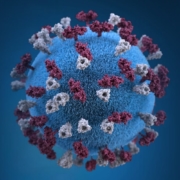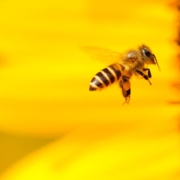Pesticide Program Update: EPA Posts Draft Biological Opinion for Carbaryl and Methomyl for Public Comment
This original announcement was published by the EPA on March 16, 2023. Click here for more information.
Today, the U.S. Environmental Protection Agency (EPA) is posting and seeking public comment on the National Marine Fisheries Service’s (NMFS) draft biological opinion for the insecticides carbaryl and methomyl. Carbaryl and methomyl are insecticides used on a variety of crops, including field vegetables and orchard crops.
Under the Endangered Species Act (ESA), EPA must ensure that its actions, including many pesticide registration actions, do not jeopardize federally listed endangered or threatened species, or adversely modify their designated critical habitats. When EPA determines in a biological evaluation that use of a pesticide product may affect these species or critical habitats, EPA must initiate formal consultation with NMFS, the U.S. Fish and Wildlife Service (FWS), or both (the Services). In response, the Service(s) may develop a biological opinion that determines whether the pesticide will jeopardize listed species or adversely modify critical habitats.
In March 2021, EPA completed its final biological evaluations for carbaryl and methomyl. EPA’s biological evaluations made “likely to adversely affect” determinations for 1,640 listed species and 736 designated critical habitats for carbaryl and 1,098 listed species and 736 designated critical habitats for methomyl. A “likely to adversely affect” (LAA) determination means that EPA reasonably expects that at least one individual animal or plant of any listed species may be exposed to these pesticides at a sufficient level to have an adverse effect. This is the case even if a listed species is almost recovered to a point where it may no longer need to be listed.
EPA initiated formal consultation with the Services upon completing these biological evaluations and, in response, NMFS has developed a draft biological opinion for carbaryl and methomyl.
Biological opinion and next steps
The draft biological opinion includes NMFS’s determinations that, under the ESA, use of carbaryl and methomyl is likely to jeopardize some listed species and adversely modify their critical habitats when used as registered. The draft biological opinion contains measures to avoid jeopardy and adverse modification, and to minimize “take,” which is incidental harm of listed species.
In its draft biological opinion, NMFS evaluated the effects of the use of pesticide products containing carbaryl and methomyl and determined that carbaryl is likely to jeopardize 37 listed species and adversely modify 36 critical habitats. Methomyl is likely to jeopardize 30 listed species and adversely modify 29 critical habitats. These findings cover only NMFS species. FWS will issue its own biological opinion addressing the listed species under their purview.
The draft biological opinion describes measures to avoid jeopardy, including a flexible list of chemical-specific measures to reduce loading of pesticides into aquatic habitats to protect them from adverse effects of pesticide exposure. It also includes measures to minimize take and impacts to critical habitats, such as the development of ESA educational materials, reporting of label compliance monitoring, and inclusion of label information about ecological incident reporting.
EPA and NMFS are particularly interested in comments on the draft biological opinion regarding:
- additional risk reduction options beyond those described in the biological opinion;
- the general feasibility of drift reduction measures based on wind direction; and
- runoff and/or spray drift reduction technologies.
After the 60-day public comment period, EPA will provide NMFS with the comments received and a summary of the comments for consideration before it finalizes the biological opinion. EPA will implement the final biological opinion.
The biological opinion is available for public comment in docket EPA-HQ-OPP-2023-0144.
Biological Opinions Available for Public Comment and Links to Final Opinions





